Lifestyle
Zimbabwe’s stone carvers seek a revival as an Oxford exhibition confronts a British colonial legacy
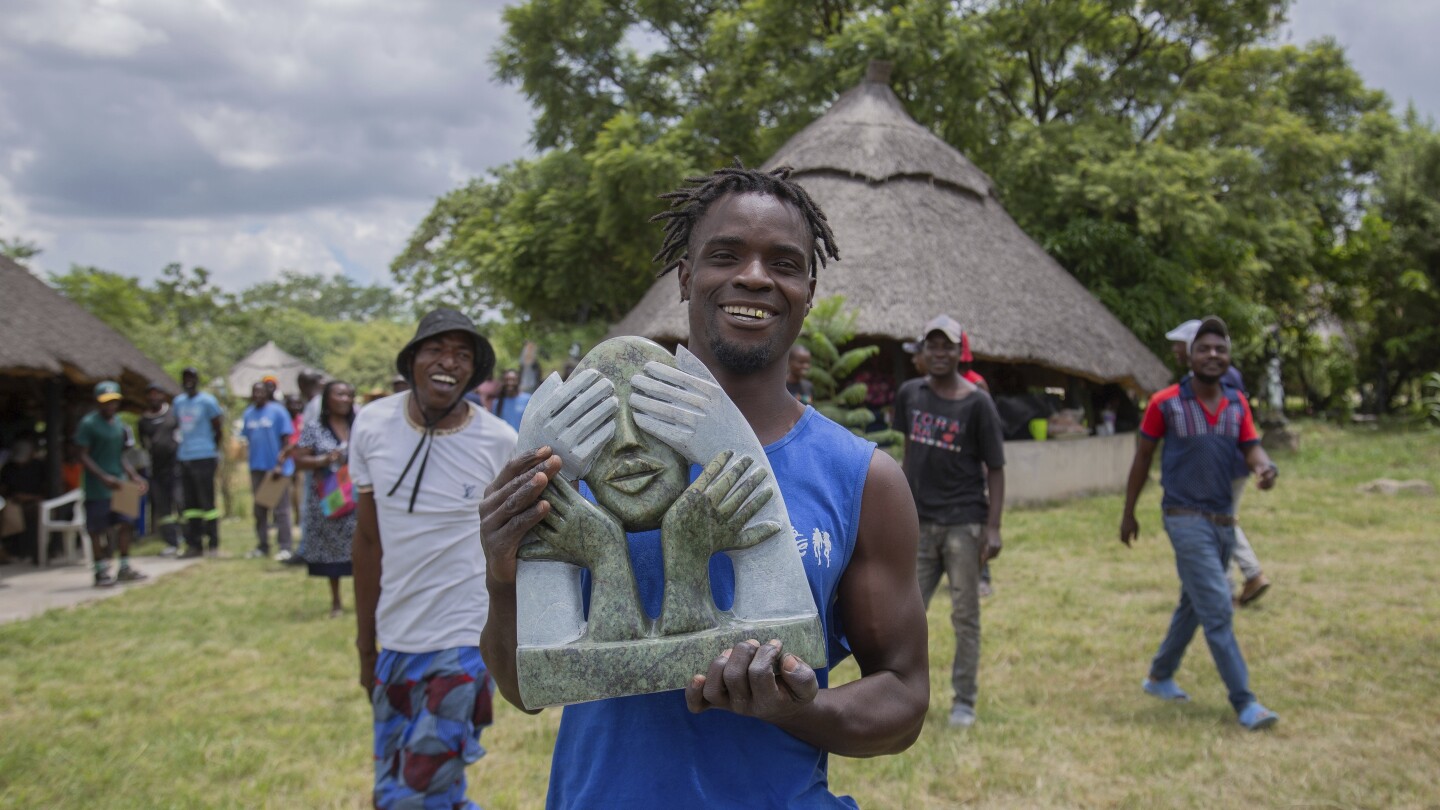
CHITUNGWIZA, Zimbabwe (AP) — A pair of white hands blinding a Black face. A smiling colonizer with a Bible, crushing the skull of a screaming native with his boot. Chained men in gold mines, and a pregnant woman.
These stone sculptures from Zimbabwe will take center stage at an upcoming exhibition at Oxford University in Britain, aiming to “contextualize” the legacy of British imperialist Cecil John Rhodes with depictions of religious deception, forced labor and sexual abuse.
Rhodes conquered large parts of southern Africa in the late 19th century. He made a fortune in gold and diamond mining and grabbed land from the local population. His grave lies under a slab of stone atop a hill in Zimbabwe.
Oxford’s Oriel College, where the exhibition will be held in September, is a symbolic setting. A statue of Rhodes stands there despite protests against it since 2015. Rhodes, who died in 1902, was an Oriel student who left 100,000 pounds (now valued at about 10.5 million pounds, or $13.5 million) to the school. His influence endures through a scholarship for students from southern African countries.
For Zimbabwean stone carvers at Chitungwiza Arts Center near the capital, Harare, the exhibition is more than an opportunity for Western audiences to glimpse a dark history. It is also a chance to revive an ancient but struggling art form.
Stone sculpture, once a thriving local industry, has suffered due to vast economic challenges and declining tourism.
“This will boost business. Buyers abroad will now see our work and buy directly from the artists,” said sculptor Wallace Mkanka. His piece, depicting the blinded Black face, was selected as the best of 110 entries and will be one of four winning sculptures on display at Oxford.
Zimbabwe, meaning “House of Stone,” derives its identity from the Great Zimbabwe ruins, a 1,800-acre Iron Age city built with precision-cut stones delicately stacked without mortar. It is a UNESCO World heritage site.
The southern African country has long used stone sculpture as a form of storytelling to immortalize history. The craft survived close to a century of colonial rule that sought to erase local traditions, religion and art forms.
It thrived internationally instead. Thousands of pieces were plundered from Africa. Some later became subjects of repatriation campaigns. Others became prized by tourists and collectors. A permanent collection of 20 Zimbabwean stone sculptures is displayed in a pedestrian tunnel at Hartsfield-Jackson Atlanta International Airport, one of the world’s busiest.
At its peak following independence, Zimbabwe’s stone sculpture industry thrived, with local white farmers purchasing pieces for their homes and facilitating international sales.
“Customers were everywhere. They would pay up front, and I always had a queue of clients,” recalled Tafadzwa Tandi, a 45-year-old sculptor whose work will feature in the Oxford exhibition.
However, the industry has struggled over the past two decades.
Zimbabwe’s global image suffered after controversial land reforms more than two decades ago displaced over 4,000 white farmers to redistribute land to about 300,000 Black families, according to government figures. Late ruler Robert Mugabe defended the reforms as necessary to address colonial-era inequities, but they had unintended economic consequences.
“Many of our customers were friends of the farmers. That is where the problem originated from,” said Tendai Gwaravaza, chairman of Chitungwiza Arts Center.
At the center, the sound of grinders filled the air as sculptors carved. Hundreds of finished pieces, ranging from small carvings to life-sized sculptures, waited for buyers.
“The only solution now is to get out there to the markets ourselves. If we don’t, no one will,” Gwaravaza said.
The Oxford exhibition represents such an opportunity for exposure, he said.
It is the brainchild of the Oxford Zimbabwe Arts Partnership, formed in response to the “Rhodes Must Fall” campaign during the Black Lives Matter protests in the U.S.
The group, consisting of Zimbabwean artists, an Oxford alumnus and a professor of African history, initially envisioned a larger project titled “Oxford and Rhodes: Past, Present, and Future.” It included enclosing Rhodes’ statue in glass, installing 100 life-size bronze statues of African liberation fighters and creating a collaborative sculpture using recycled materials to represent the future.
However, the project required an estimated 200,000 pounds, far beyond available resources. Eventually, Oriel College provided 10,000 pounds for a scaled-down exhibition.
“It’s still my hope that one day it could happen, but for now we have just accepted something very small to make a start and to do something,” said Richard Pantlin, the Oxford alumnus and OZAP co-founder.
___
For more on Africa and development: https://apnews.com/hub/africa-pulse
___
The Associated Press receives financial support for global health and development coverage in Africa from the Gates Foundation. The AP is solely responsible for all content. Find AP’s standards for working with philanthropies, a list of supporters and funded coverage areas at AP.org.
Lifestyle
Queen Elizabeth II’s favorite dog breed race for glory in the UK’s Corgi Derby

LONDON (AP) — Some of the fastest canines on four very short legs have raced for glory in Scotland’s annual Corgi Derby.
The Musselburgh Racecourse Corgi Derby was first held in 2022 to mark Queen Elizabeth II’s 70 years on the throne. The late monarch was a devoted corgi fan who owned almost 30 of the breed over the decades, along with a few dorgis – a corgi-dachshund cross.
Four-year-old Juno beat a 16-strong field of dashing dogs dressed in bright sweaters over the 230-foot (70-meter) race on Saturday at the racecourse outside Edinburgh. She came from behind in the final stretch to beat last year’s winner, Rodney.
The winner and her owners, Alisdair Tew and Fran Brandon, were presented with a trophy and dog treats by tennis coach Judy Murray, mother of Scottish star Andy Murray.
Tew told the BBC that “we trained her for this last year but this year we just resorted to just letting her chasing things, particularly seagulls” on Edinburgh’s Portobello Beach.
“Juno is always ready for treats -– that is probably why she won,” he said.
Elizabeth’s love of corgis began in 1933 when her father, King George VI, brought home a Pembroke Welsh corgi they named Dookie
Corgis were often by Elizabeth’s side in the decades before her death in September 2022 — accompanying her on official tours, reportedly sleeping in their own room at Buckingham Palace and occasionally nipping the ankles of visitors or royal family members.
Three corgis even appeared alongside the queen as she climbed into James Bond’s waiting helicopter in the spoof video that opened the 2012 London Olympics.
Lifestyle
Tariffs are likely to make having a baby cost more
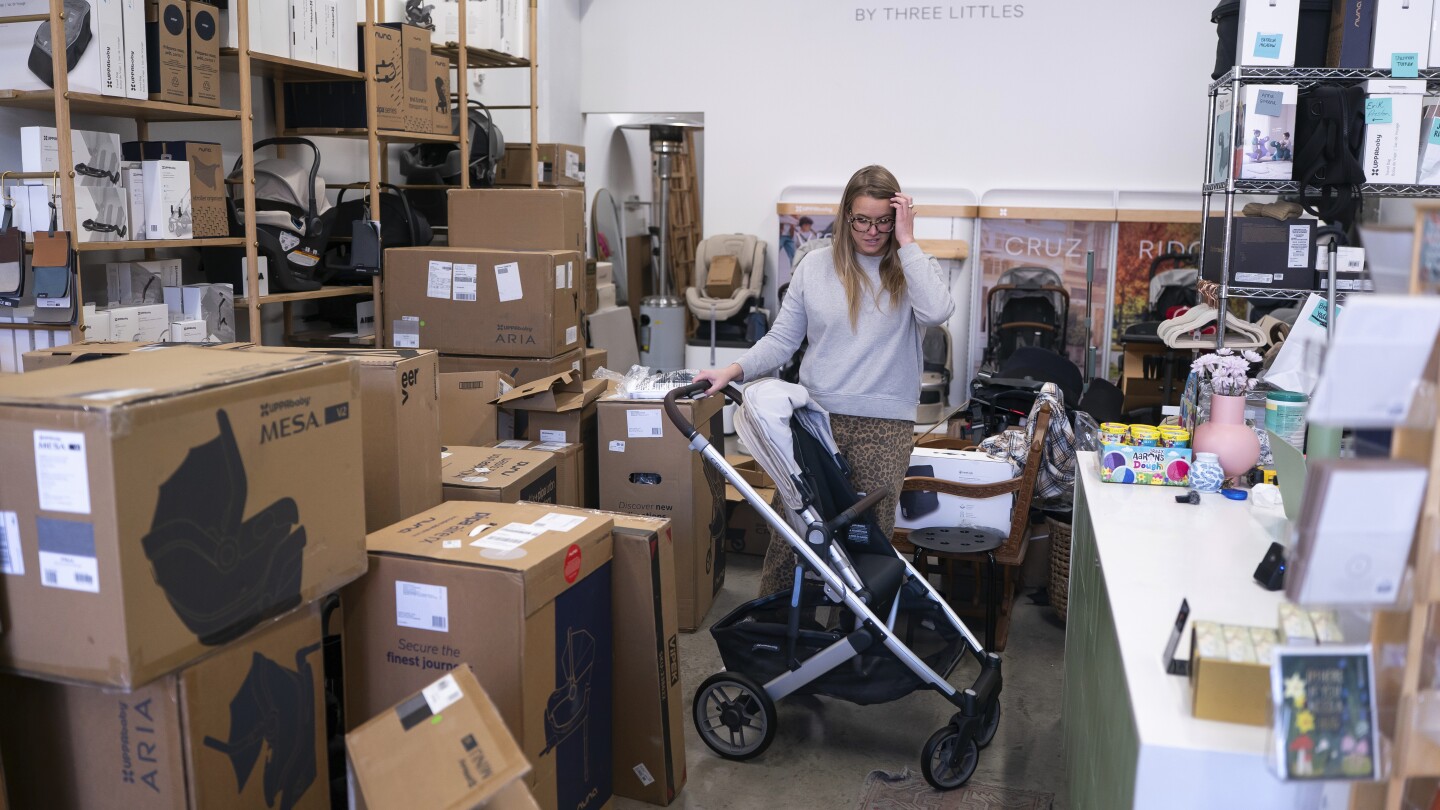
Sam Rutledge and his wife have a baby due in mid-July, so they thought they had a few more months to research and buy the gear they’ll need.
But President Donald Trump’s tariff announcement in early April turned the couple’s slow walk into a sprint. In the past few weeks, they’ve bought two strollers, a car seat, a nursery glider, a crib and a high chair. All of them are made overseas.
“These are all pretty expensive under normal conditions, but when it became clear tariffs were coming we decided to buy them in case they became prohibitively expensive,” said Rutledge, who is a high school physics teacher.
Raising a child in America has never been cheap. In the first year alone, it costs an average of $20,384, according to Baby Center, a parenting website. But tariffs – ranging from 10% for imports from most countries to 145% for imports from China — will make it many times more expensive for new parents.
An estimated 90% of the core baby care products and the parts that go into making baby paraphernalia – from bottles and diaper pails to strollers and car seats – are made in Asia, according to the Juvenile Products Manufacturers Association, a U.S. trade group. The vast majority come from China.
“Overseas manufacturing has been the norm in our industry for decades,” said Lisa Trofe, the association’s executive director.
It wasn’t always this way. When Munchkin Inc. CEO Steven Dunn founded his company in 1991, it made baby bottles in California with tooling from New Jersey. But over the years, the manufacturers he used shut down and the cost of doing business in the U.S. skyrocketed. Now, about 60% of Munchkin’s 500 products, from a $5 sippy cup to a $254 Night Owl Stroller with headlights, are made in China.
In response to the tariffs, Dunn halted orders from China and instituted a hiring freeze at Munchkin’s California headquarters, where 320 people are employed. Dunn expects Munchkin will run out of some products within three months.
“There is no possibility of being able to pass on those tariffs” to customers in the form of price increases, he said.
Dunn said he tried to reduce his dependence on China in recent years, shifting some manufacturing to Vietnam and Mexico. He also spent a year communicating with American manufacturers to see if one could make Munchkin’s new Flow Nipple Shield, which allows a breastfeeding mother to see if her milk is flowing. But most said they couldn’t make the complex silicone product, Dunn said. It’s now made in Vietnam.
“There’s not enough tool makers and manufacturing expertise and automation and skilled labor in the U.S. to make the thousands of products the juvenile industry needs,” Dunn said.
Multiple baby brands and companies contacted by The Associated Press didn’t respond or said they weren’t commenting on the tariffs, including Graco, Chicco, Britax, Nuna, Dorel Juvenile, UppaBaby, Evenflo and Bugaboo.
The Juvenile Products Manufacturers Association said it asked the Trump administration for a tariff exemption, arguing that baby products are essential for children’s well-being. Trump exempted some baby products, including car seats and high chairs, from import taxes during his first administration. But he hasn’t said whether he would consider doing so again.
The Associated Press left a message seeking comment with the White House.
Nurture&, a company that makes a popular nursery glider and other baby furniture, said it’s trying to be transparent about the impact of tariffs.
In a recent email, the company told customers it started lowering prices on some items when the tariffs hit. The company, which was founded in 2020, said it would keep those lower prices in place until April 30, but after that it may not be able to absorb the full cost of the import duties.
“These are large purchases, these are investments, and this is a very sensitive life stage,” Nurture& Chief Merchant Jill Gruys said. “We want people to make the best decision for their budget and their family.”
Elizabeth Mahon, the owner of Three Littles, a baby store in Washington, said she’s worried the tariffs will make essential products too expensive for some families.
Mahon volunteers twice per month at the Department of Motor Vehicles, where she teaches people how to buckle their kids safely into car seats. Some families still must be persuaded to use car seats, she said. Mahon fears higher prices would be another deterrent.
“No one is dying if they can’t buy a toy, but if they don’t have access to car seats, kids will get seriously injured,” she said.
At her own store, Mahon is getting notices that some manufacturers plan to introduce steep price increases in May. She feels lucky she could rent a storage facility and build up inventory ahead of the tariffs. For many small businesses, she said, the extra costs are “a death sentence.”
At The Little Seedling baby shop in Ann Arbor, Michigan, owner Molly Ging said she would normally be putting in Christmas orders at this time of year. Instead, she’s sorting through price increase notices from many of the vendors she works with.
“It’s a lot to manage, and I just have no idea how it’s going to play out,” she said.
Business is brisk right now, with customers hoping to beat tariff-related price increases. But Ging worries about her 13 employees – all moms who bring their kids to work – and about whether she can maintain enough inventory to meet future demand.
“Babies don’t stop being born because there’s tariffs,” she said.
Lifestyle
Famed Sherpa guide will attempt to climb Mount Everest for a 31st time and break his own record
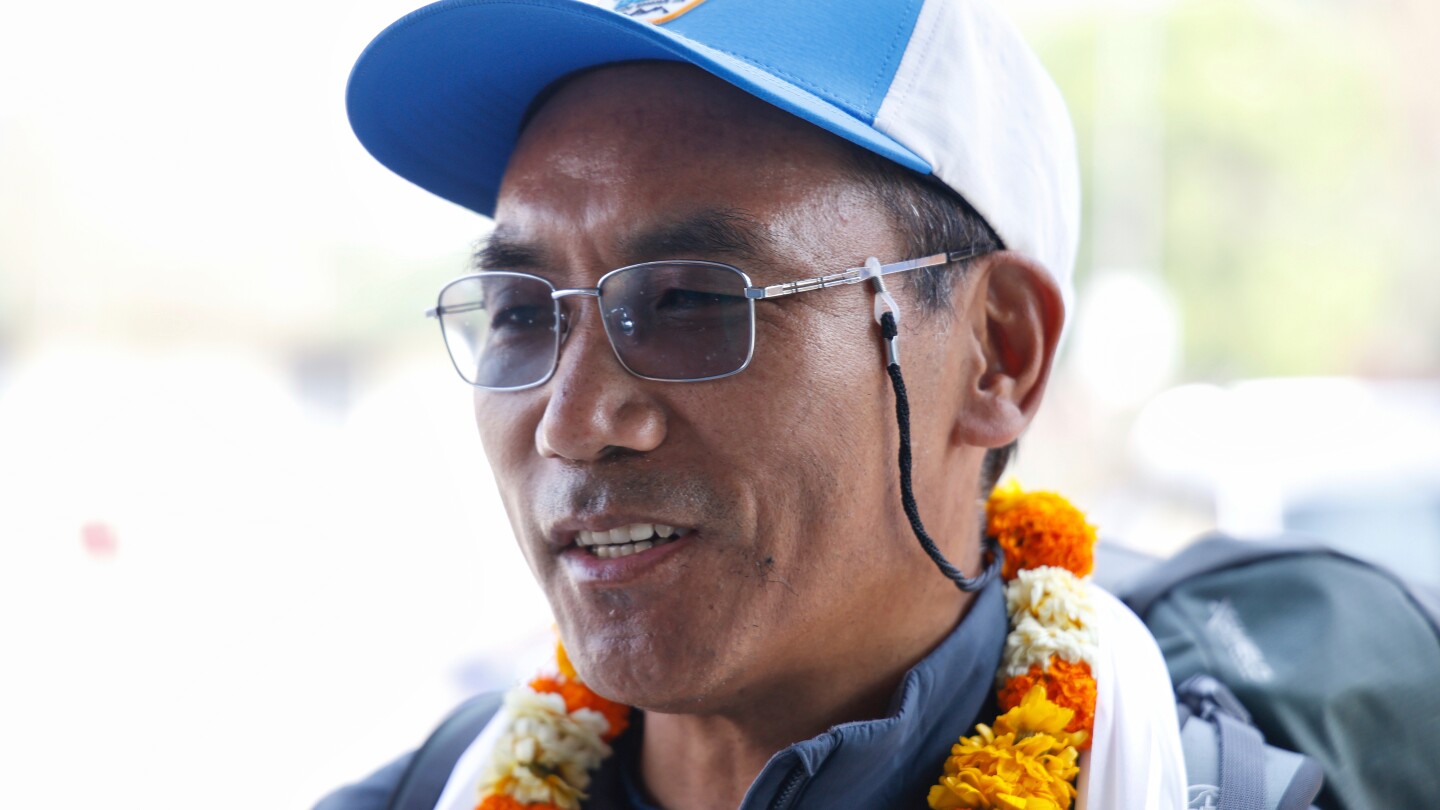
KATHMANDU, Nepal (AP) — One of the greatest mountain guides will attempt to scale the world’s highest peak for the 31st time — and possibly the 32nd time as well — and break his own record.
Kami Rita, 55, flew to Mount Everest on Sunday from Kathmandu to lead a group of climbers who will try to reach the 8,849-meter (29,032-foot) summit during the spring climbing season.
“I am mentally, emotionally and physically prepared to climb the mountain,” Kami Rita told The Associated Press at Kathmandu’s airport. “I am in my top physical condition right now.”
He holds the record for the most successful ascents of Mount Everest at 30 times. In May last year he climbed the peak twice.
“My first priority is to get my client to the summit of the peak. Then I will decide on whether I will climb the peak more than one time during the season. It depends on the weather and conditions on the mountain,” he said.
His closest competitor for the most climbs of Mount Everest is fellow Sherpa guide Pasang Dawa, who has made 27 successful ascents of the mountain.
Kami Rita first climbed Everest in 1994 and has been making the trip nearly every year since. He is one of many Sherpa guides whose expertise and skills are vital to the safety and success each year of foreign climbers aspiring to stand on top of the mountain.
His father was among the first Sherpa mountain guides. In addition to his Everest climbs, Kami Rita has scaled several other peaks that are among the world’s highest, including K2, Cho Oyu, Manaslu and Lhotse.
According to Nepal’s Department of Tourism, 214 climbers have been issued permits to attempt Mount Everest from the Nepali side of the peak in the south this climbing season, which ends in May. Most climbing of Everest and nearby Himalayan peaks is done in April and May, when weather conditions are most favorable.
Everest was first climbed in 1953 by New Zealander Edmund Hillary and Nepali Sherpa Tenzing Norgay.
-

 Education2 days ago
Education2 days agoHarvard’s battle with the Trump administration is creating a thorny financial situation
-

 Sports2 days ago
Sports2 days agoClint Dempsey speaks to CNN over his concerns over the USMNT heading into its home World Cup
-

 Middle East1 day ago
Middle East1 day agoTunisian court hands opposition figures lengthy jail terms | Human Rights News
-

 Europe2 days ago
Europe2 days agoTrump’s ‘lone ranger’: How Steve Witkoff became the defacto point man on America’s foreign policy challenges
-
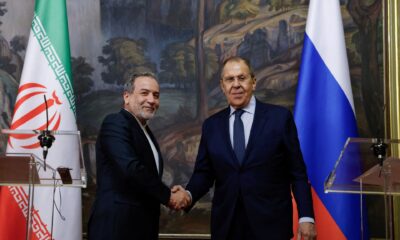
 Conflict Zones2 days ago
Conflict Zones2 days agoIran has ‘doubts’ about US intentions ahead of nuclear talks | Politics News
-

 Conflict Zones2 days ago
Conflict Zones2 days ago‘How do I live like this?’ asks Gaza boy who lost arms in Israeli attack | Gaza News
-

 Conflict Zones2 days ago
Conflict Zones2 days agoTrump says US may ‘pass’ on helping end war if Russia, Ukraine resist deal | Russia-Ukraine war News
-
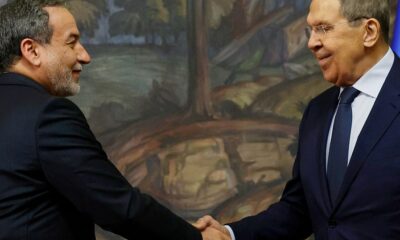
 Africa2 days ago
Africa2 days agoIran seeks Russia’s support for its nuclear talks with US




